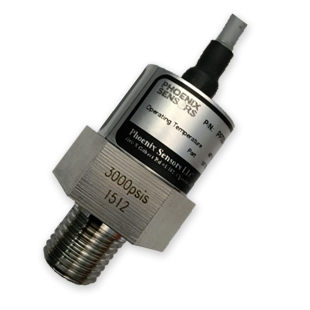Digital Pressure Transducer High Temperature
Digital Pressure Transducer High Temperature – The PPT82 is a digital (I2C, SPI) pressure transducer manufactured for a high operating temperature range for the most challenging of applications. This silicon pressure transducer was designed for industrial and commercial applications. The stainless steel design and high temperature analog component selection allows the sensor to be used in high temperature applications.
The PPT82 series utilizes MEMS piezo-resistive sensors pressurized on the passive backside of the SS housing which has superior long term stability and accuracy (.25% Linearity).
The design is simple, cost effective, and proves reliable for OEM customers. Please contact us for Custom design availability. Phoenix Sensors is a US manufacturer of pressure transducers like the PPT82 series.
Applications
- Mil/Aero
- Industrial Automation
- HVAC
- Automotive Engine
- Compressor
- Pneumatic
Specifications
- High Pressure (500-10k psi)
- Media Isolated –SS316
- -20-125°C (150C Avail) Operating Temperature
- Compact Size
- 5 ms Response Time
- 1% Total Error Band
- Digital Output – SPI, I2C
- Low-Power (<5uA Stand-by)
- Media – Harsh Liquid, Air, & Gas
Digital Output Communication
Digital Signal Processor
A digital signal processor (DSP) is used for processing the converted differential signal as well as performing temperature correction and computing the temperature value for digital output.
Normal Operation Mode
Two operation modes are available for normal operation: Update Rate Mode (continuous conversion at a select-able update rate) or Sleep Mode (low power). (See section 3.1.) Both modes can operate in either I2C digital out-put or SPI digital output. These selections are made at the factory. Factory Default is SPI.
EEPROM
The EEPROM array contains the calibration coefficients for gain and offset, etc., and the configuration bits, such as output mode, update rate, etc.

